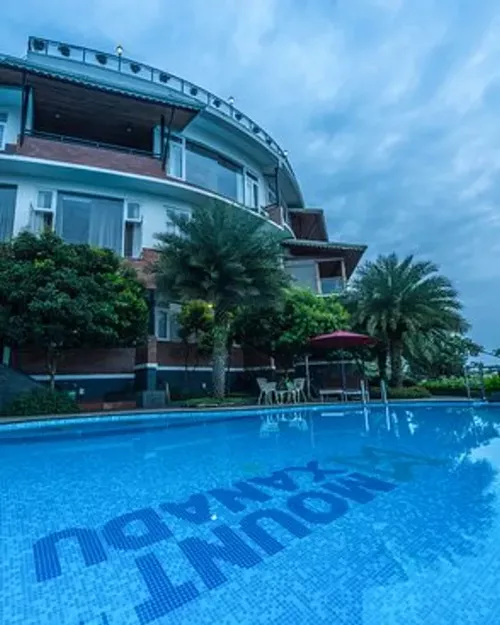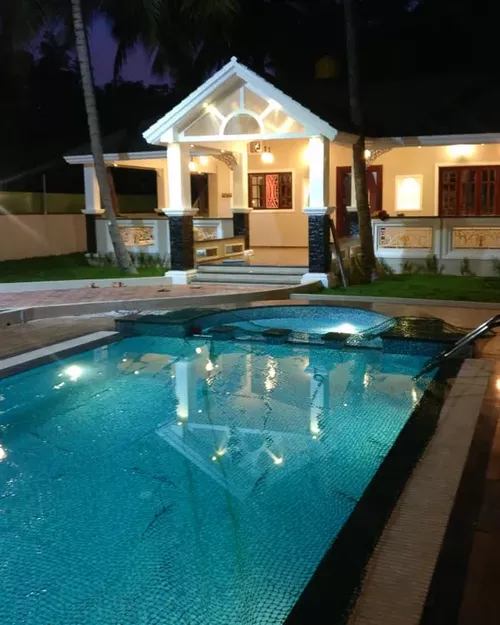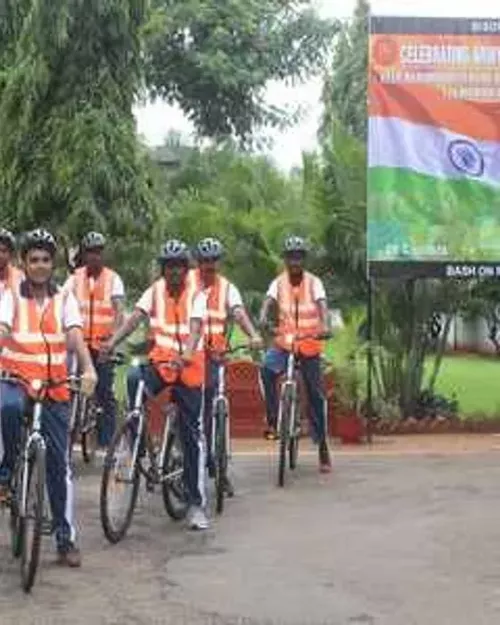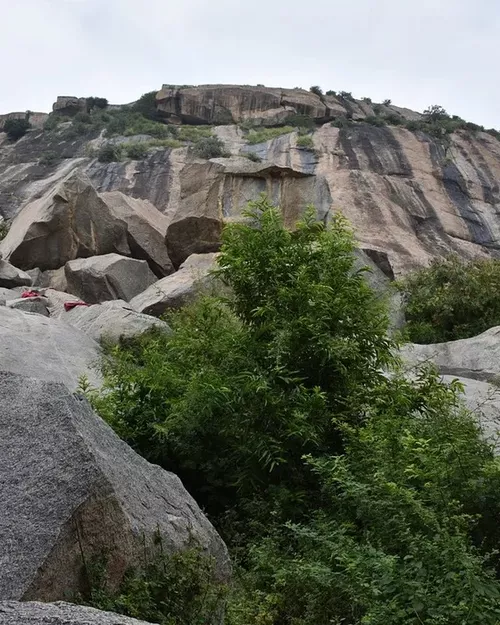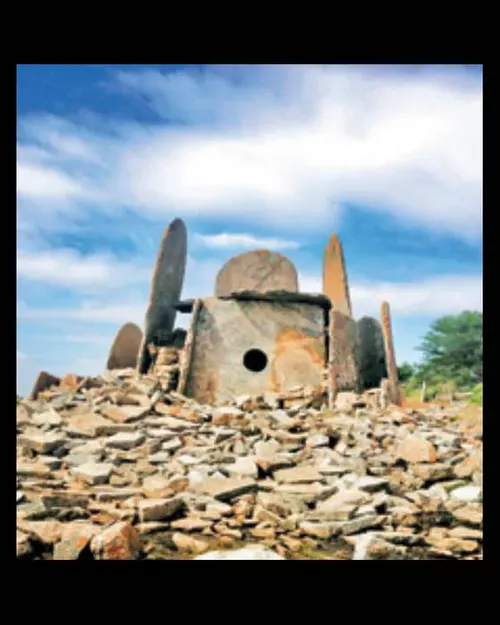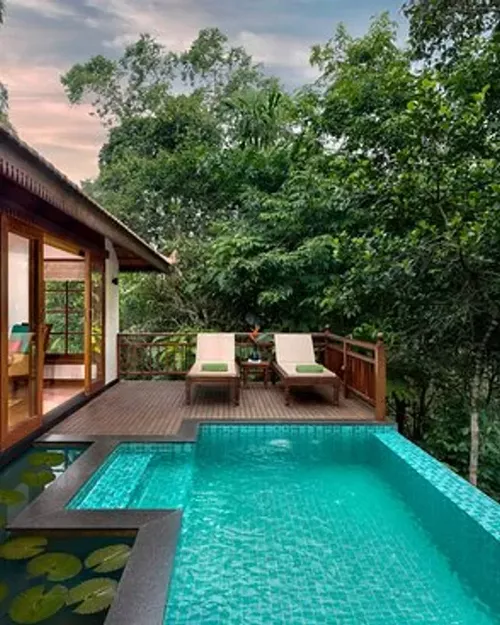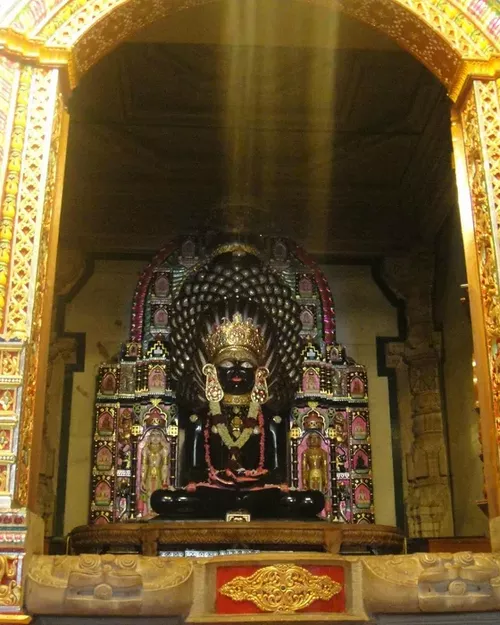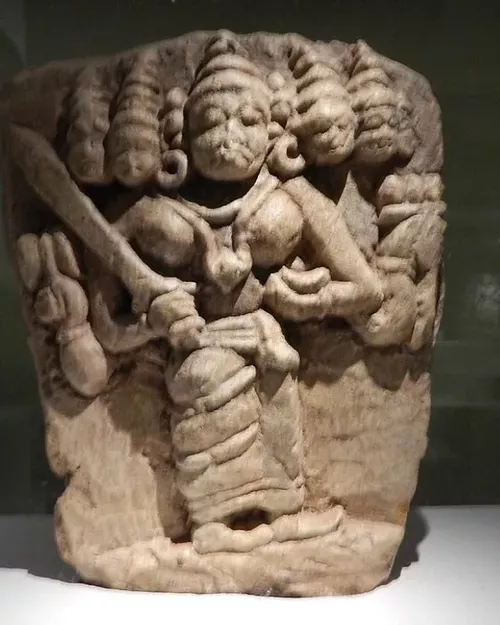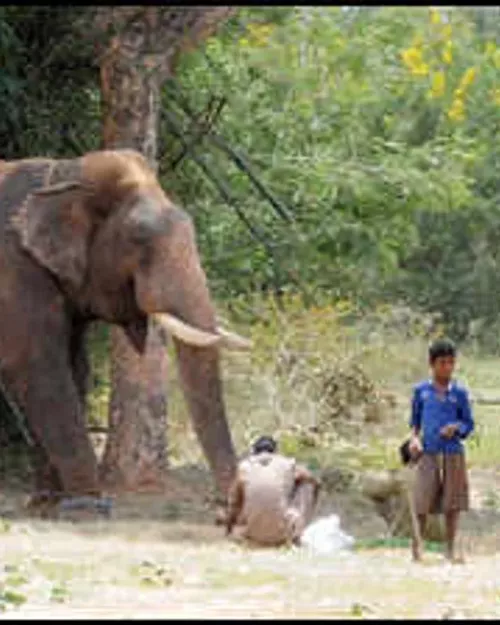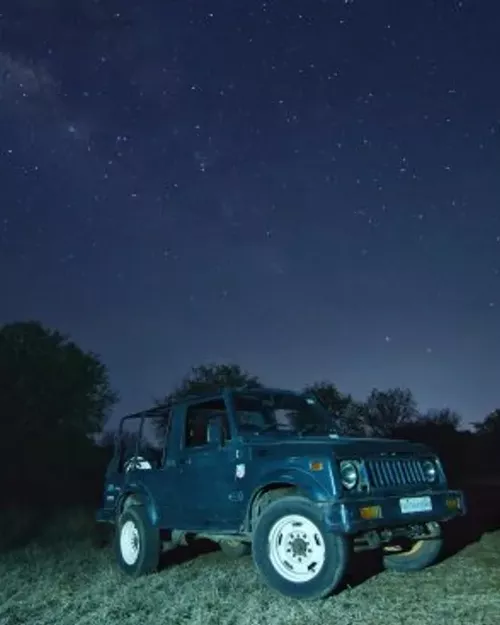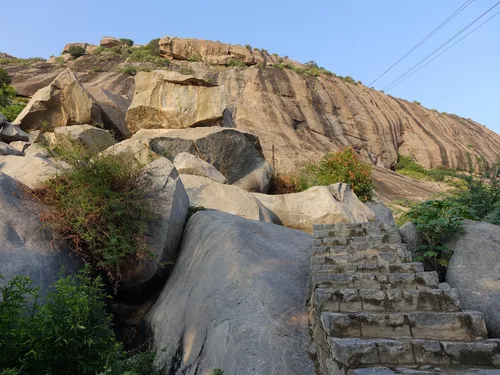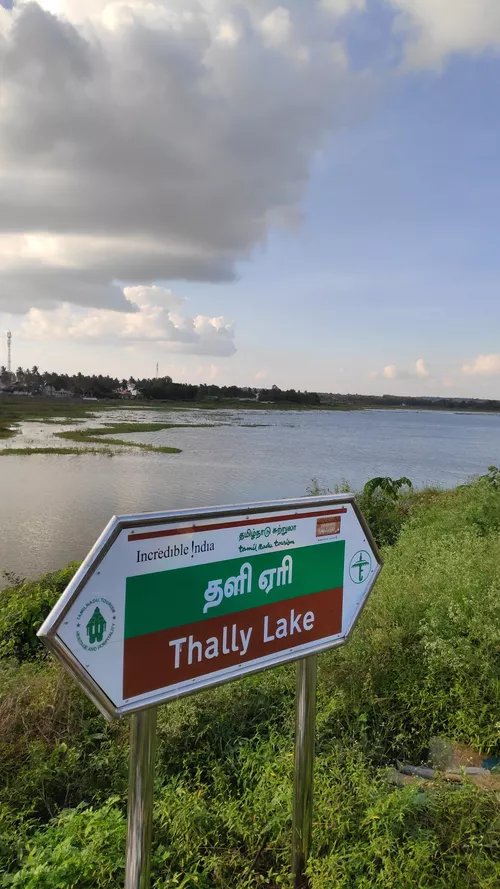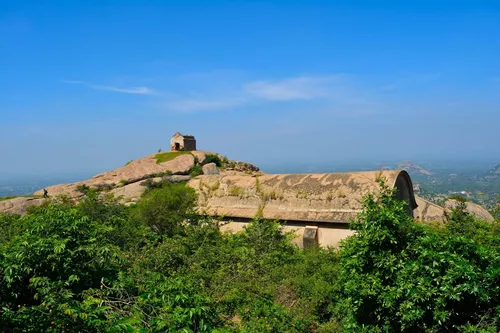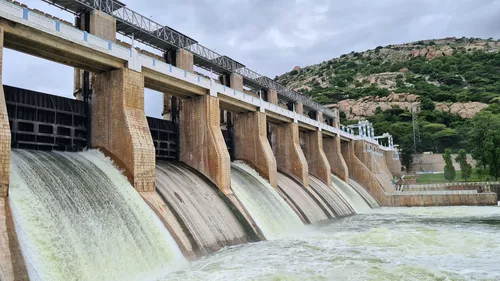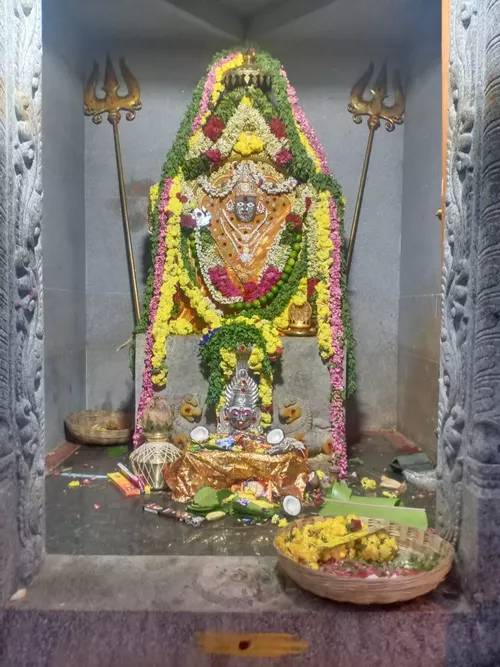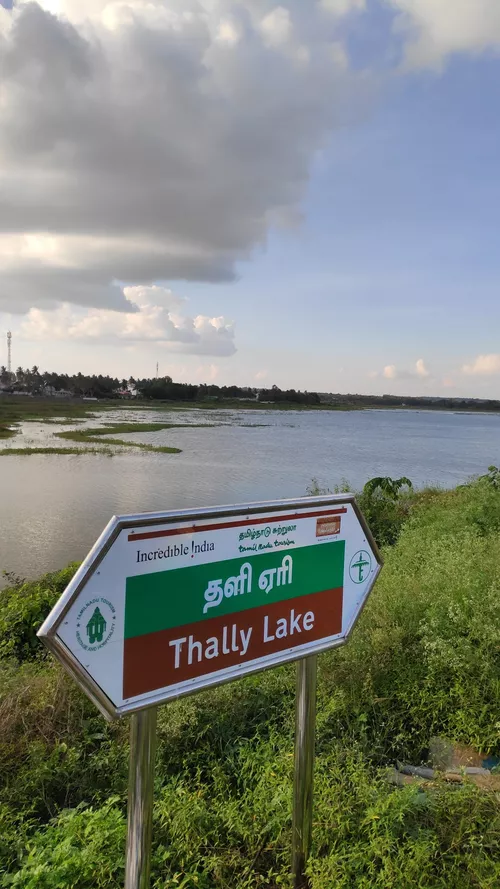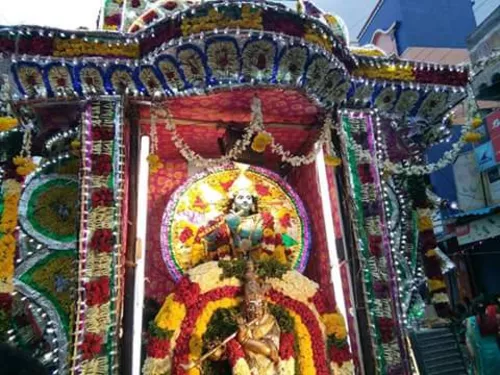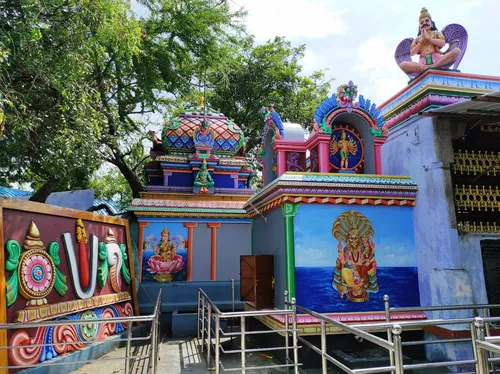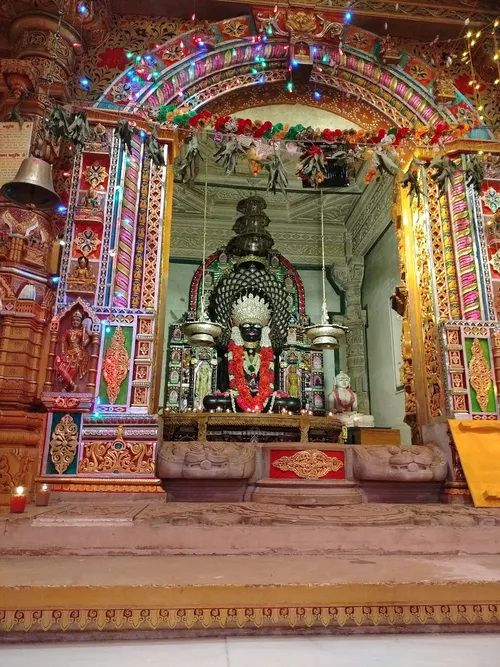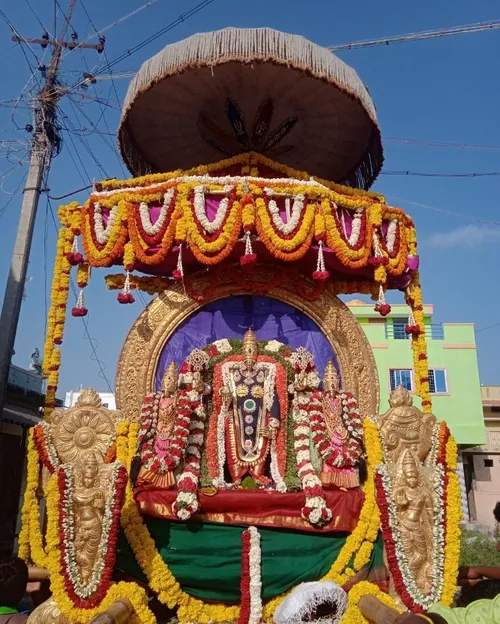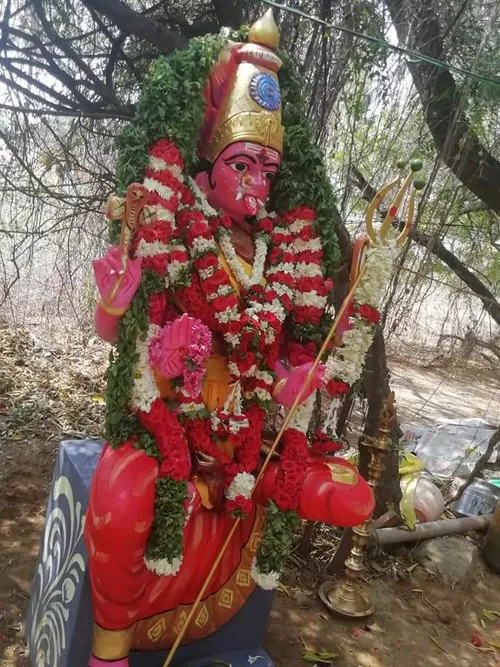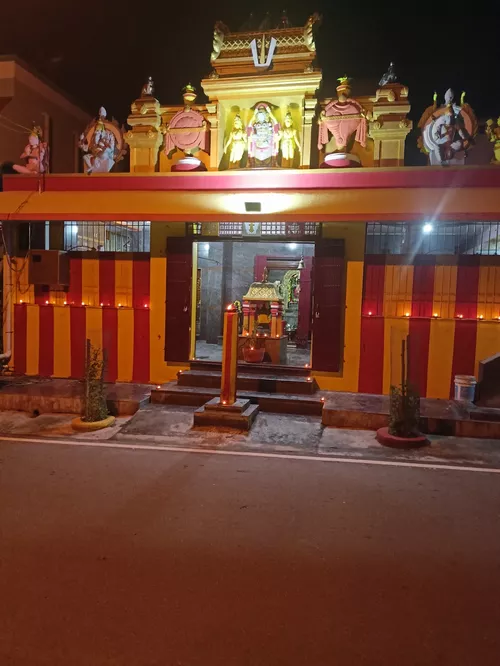Krishnagiri is popular for
Krishnagiri in next 3 month
Weather in Krishnagiri
December in Krishnagiri is cool and misty with moderate air quality, making it a pleasant time to visit.
Usual trip duration
A 2-3 day trip to Krishnagiri allows you to explore the beautiful hills, visit the Krishnagiri Dam, and experience the tranquility of nature. It's a perfect short getaway from the city.
Affordable destination with low cost options
Ideas To Plan Your Trip
Places To Visit
Places To Eat
Frequently Asked Questions
The best time to visit Krishnagiri, Tamil Nadu, is during the winter months, from October to March. During this period, the weather is pleasant and conducive for sightseeing and outdoor activities. The temperature typically ranges from 20°C to 30°C, providing a comfortable environment for exploring the region's attractions. The monsoon season, from June to September, brings heavy rainfall, which can disrupt travel plans. Summer, from March to May, can be quite hot and humid, with temperatures potentially exceeding 40°C, making it less ideal for tourism. Planning your visit during the cooler months ensures a more enjoyable and comfortable experience, allowing you to fully appreciate the historical sites, natural beauty, and cultural heritage of Krishnagiri without being affected by extreme weather conditions.
Krishnagiri, a district rich in historical significance and natural beauty, offers several attractions worth exploring. Here’s a list of must-visit places:
| Landmark | Highlights |
|---|---|
| Krishnagiri Fort | A historical fort perched atop a hill, offering panoramic views of the surrounding landscape. It stands as a testament to the region's rich history and strategic importance. |
| Krishnagiri Reservoir Project (KRP) Dam | A scenic dam and reservoir, perfect for a peaceful retreat and enjoying the natural beauty of the area. The surrounding gardens and viewpoints make it an ideal spot for relaxation and photography. |
| Rayakottai Fort | Another ancient fort with historical significance, offering insights into the region's past. It's known for its strategic location and architectural remnants. |
| Sayed Basha Hill | A popular trekking spot offering stunning views from the summit. Ideal for adventure enthusiasts and nature lovers. |
| Government Museum Krishnagiri | Showcasing artifacts and exhibits related to the history and culture of the Krishnagiri district. Provides a deeper understanding of the region's heritage. |
Reaching Krishnagiri is convenient through various modes of transportation:
| Mode | Details |
|---|---|
| By Air | The nearest airport is Kempegowda International Airport in Bangalore, which is approximately 90 km away. From the airport, you can hire a taxi or take a bus to Krishnagiri. |
| By Train | Krishnagiri has its own railway station (KPN), which is well-connected to major cities in South India, including Chennai, Bangalore, and Coimbatore. Several express and passenger trains stop here. |
| By Road | Krishnagiri is well-connected by road to major cities in Tamil Nadu, Karnataka, and Andhra Pradesh. National Highway 44 (NH44) passes through the city, making it easily accessible by buses and taxis. State-run and private buses operate frequently from nearby cities. |
Once you arrive in Krishnagiri, local transport options include auto-rickshaws, taxis, and local buses, which are readily available for getting around the town and visiting nearby attractions.
Krishnagiri offers a variety of activities for tourists to enjoy, catering to different interests:
- Exploring Historical Sites: Visit the Krishnagiri Fort and Rayakottai Fort to delve into the region's rich history and enjoy panoramic views.
- Nature and Adventure: Trek to Sayed Basha Hill for stunning views and a refreshing experience. Spend time at the Krishnagiri Reservoir Project (KRP) Dam, enjoying the scenic beauty and peaceful surroundings.
- Cultural Immersion: Visit local temples and participate in festivals to experience the vibrant culture of Krishnagiri.
- Museum Visit: Explore the Government Museum Krishnagiri to learn about the art, archaeology, and history of the district.
- Photography: Capture the picturesque landscapes, historical monuments, and cultural moments in Krishnagiri. The KRP Dam, forts, and hills offer excellent photo opportunities.
- Local Cuisine: Savor the local cuisine at traditional restaurants and street food stalls to experience the flavors of Tamil Nadu.
These activities provide a well-rounded experience, allowing visitors to appreciate the history, nature, and culture of Krishnagiri.
Krishnagiri serves as a great base to explore several interesting destinations nearby. Here are some popular options:
| Destination | Distance (Approx.) | Highlights |
|---|---|---|
| Hogenakkal Falls | 60 km | Known as the 'Niagara of India,' famous for its cascading waterfalls and coracle (boat) rides. |
| Yercaud | 130 km | A scenic hill station in the Shevaroy Hills, known for its coffee plantations, lakes, and viewpoints. |
| Vellore | 120 km | Home to the historic Vellore Fort, a well-preserved example of military architecture, and the Golden Temple (Sripuram). |
| Bengaluru | 90 km | A major metropolitan city with numerous attractions, including Bangalore Palace, Lal Bagh Botanical Garden, and Tipu Sultan's Summer Palace. |
While Krishnagiri may not be a major shopping hub, it still offers several options for purchasing local products and souvenirs:
| Market/Location | Specialty |
|---|---|
| Local Bazaars | The town center has local markets where you can find textiles, clothing, and household items. |
| Handicraft Shops | Look for small shops selling locally made handicrafts and souvenirs, reflecting the region's culture. |
| Retail Outlets | Krishnagiri has a number of retail stores offering clothing, electronics and other essential items. |
For a more extensive shopping experience, consider visiting nearby cities like Bangalore or Hosur, which offer a wider variety of retail options and shopping malls. These cities are easily accessible from Krishnagiri and can be a part of your travel itinerary.
Krishnagiri offers a variety of dining options, from traditional South Indian cuisine to multi-cuisine restaurants. While specific 'best' spots can be subjective and change, here are some popular types of restaurants and places you might enjoy:
| Category | Restaurant/Location (Examples) |
|---|---|
| Traditional South Indian | Look for local restaurants serving dosas, idlis, vadas, and uttapams. These are commonly available throughout the town. |
| Biryani and Non-Vegetarian Cuisine | Several restaurants specialize in biryani, chicken, and mutton dishes. |
| Street Food | Explore street food stalls for local snacks and quick bites. You can find options like bonda, vada pav and samosas. |
| Multi-Cuisine Restaurants | Some establishments offer a mix of Indian, Chinese, and Continental dishes to cater to different tastes. |
When exploring Krishnagiri, don't hesitate to ask locals for recommendations, as they can often point you to the best hidden gems and authentic culinary experiences. Enjoy sampling the local flavors and experiencing the diverse food culture of the region!
Krishnagiri Fort holds significant historical importance due to its strategic location and role in various conflicts throughout history. Built atop a rocky hill, it offered a commanding view of the surrounding plains, making it a vital defensive structure. The fort has been under the control of various dynasties, including the Vijayanagara Empire, the Nayaks, the Marathas, and the British. Each ruling power left its mark on the fort, contributing to its architectural diversity and historical narrative. The fort served as a crucial military base and a symbol of power, witnessing numerous battles and sieges. Exploring the fort today provides insights into the military strategies and architectural styles of different periods. The inscriptions, ruins, and structural remains within the fort tell stories of valor, resilience, and the ever-changing dynamics of power in the region. Its historical significance makes it a must-visit destination for those interested in the rich heritage of South India.
Yes, Krishnagiri offers a range of accommodation options to suit various budgets and preferences. You can find hotels, guesthouses, and lodges in and around the town center. For budget-conscious travelers, there are affordable guesthouses and lodges providing basic amenities. Mid-range hotels offer comfortable rooms and essential services, making them suitable for families and business travelers. While Krishnagiri itself may not have luxury resorts, nearby cities like Hosur and Bangalore offer upscale hotels with more comprehensive facilities. When choosing accommodation, consider factors such as location, accessibility to attractions, cleanliness, and guest reviews. Booking in advance is recommended, especially during peak tourist seasons, to ensure availability and secure better rates. Online travel platforms provide a convenient way to compare prices, read reviews, and book your stay in Krishnagiri.
Beyond its historical fort, Krishnagiri is known for several other aspects that contribute to its identity. The district is renowned for its horticultural activities, particularly the cultivation of mangoes. Krishnagiri mangoes are famous for their quality and are exported to various parts of India and abroad. The Krishnagiri Reservoir Project (KRP) Dam is another significant landmark, providing irrigation and serving as a popular picnic spot. The region's scenic landscapes, dotted with hills and agricultural fields, offer a tranquil escape from urban life. Krishnagiri is also recognized for its growing industrial sector, with several manufacturing units and industrial parks contributing to the local economy. Additionally, the district's cultural heritage, reflected in its temples, festivals, and local traditions, adds to its unique charm. These diverse facets – agriculture, natural beauty, industry, and culture – collectively define Krishnagiri and make it an interesting place to visit and explore.
Krishnagiri is approximately 90 kilometers away from Bangalore, making it a relatively accessible destination from the state capital of Karnataka. There are several convenient transportation options for traveling between the two cities. By road, you can take a bus or hire a taxi, with the journey typically taking around 2 to 3 hours, depending on traffic conditions. National Highway 44 (NH44) connects Bangalore and Krishnagiri, ensuring a smooth and well-maintained route. Alternatively, you can travel by train, as Krishnagiri has its own railway station (KPN) with regular train services to and from Bangalore. The train journey usually takes a similar amount of time as traveling by road. Both state-run and private buses operate frequently between the two cities, offering a range of price points and comfort levels. Whether you prefer the convenience of a taxi, the affordability of a bus, or the comfort of a train, there are ample options to choose from for your journey from Bangalore to Krishnagiri.
Yes, Krishnagiri celebrates several local festivals that offer a glimpse into the region's vibrant culture and traditions. These festivals are often centered around local deities and agricultural cycles, reflecting the community's deep-rooted connection to the land. Pongal, a harvest festival celebrated in January, is a major event in Krishnagiri, marked by traditional rituals, feasts, and cultural performances. Similarly, Deepavali, the festival of lights, is celebrated with enthusiasm, with people decorating their homes, exchanging sweets, and lighting fireworks. Temple festivals, known as 'Thiruvizha,' are also common, featuring processions, music, and dance performances. These festivals provide opportunities for locals to come together, express their devotion, and celebrate their shared heritage. Participating in or witnessing these festivals can be a rewarding experience for tourists, offering insights into the local customs, beliefs, and social fabric of Krishnagiri.



